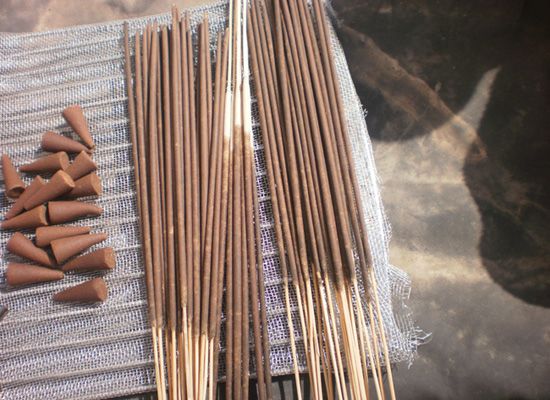The Timeless Elegance of Incense: A Journey of Aromas and Meanings
Introduction
In a world saturated with modern fragrances and technologies, there's something enchanting about the ancient tradition of burning incense. The delicate curl of smoke, the soothing aroma that fills the air, and the spiritual significance it holds across cultures make incense a timeless treasure. In this blog, we'll delve into the fascinating world of incense, exploring its history, types, uses, and the meanings it carries.
The Origins and History of Incense
The practice of burning incense dates back thousands of years and spans across various cultures and civilizations. Ancient Egyptians used incense in religious ceremonies, while it played a significant role in Hindu rituals in India. The art of making incense was refined in Asia, particularly in countries like China, Japan, and Tibet. Buddhist and Taoist temples became known for their complex and exquisite incense offerings.
Varieties of Incense
Incense comes in a myriad of forms, each with its unique blend of scents and purposes. Some of the most popular types include:
-
Stick Incense: This is one of the most common forms of incense. Fragrant materials are mixed and rolled onto a bamboo stick. Stick incense is known for its ease of use and consistent burn time.
-
Cone Incense: Similar to stick incense, but in a cone shape. These are often used for shorter rituals or to create a more intense burst of fragrance.
-
Resin Incense: These are natural tree resins that are burned on charcoal. They offer a pure and potent fragrance, often used in spiritual ceremonies.
-
Scented Candles: While not traditional incense, scented candles serve a similar purpose. They combine fragrances with the soft glow of a candle, creating a relaxing ambiance.
-
Japanese Incense: Known for its subtlety and refinement, Japanese incense is often made from natural ingredients and is associated with the tea ceremony and meditation.
The Aromatherapeutic and Spiritual Significance
The practice of burning incense goes beyond mere fragrance; it has deep-rooted spiritual and aromatherapeutic meanings. Different scents are believed to evoke specific emotions and energies. For instance:
-
Lavender: Known for its calming properties, lavender incense is often used to relieve stress and promote relaxation.
-
Sandalwood: With its earthy and grounding aroma, sandalwood is used in meditation practices to enhance focus and spiritual connection.
-
Frankincense: This resin incense has been used for centuries in religious rituals. It's believed to uplift the spirit and purify the surroundings.
-
Jasmine: The sweet and floral scent of jasmine incense is associated with love and sensuality.
-
Patchouli: Often linked with the hippie culture of the '60s and '70s, patchouli incense is thought to promote harmony and balance.
Incorporating Incense into Modern Life
While incense holds a rich historical and spiritual legacy, it's also finding its place in contemporary settings. Many people use incense to create a calming atmosphere at home, enhance yoga and meditation practices, or simply enjoy its aromatic beauty. It's essential, however, to use incense mindfully and ensure proper ventilation.
Conclusion
The allure of incense lies not only in its captivating aromas but also in the ancient stories and rituals it carries. From its origins in the depths of history to its role in modern wellness practices, incense remains a bridge between the tangible and the spiritual. So, the next time you light that fragrant stick or cone, take a moment to appreciate the centuries of tradition and meaning that dance within the curling tendrils of smoke.
Purchase your incense link: https://houseofflava.net/products/sherpa-himalayan-bath-salts

